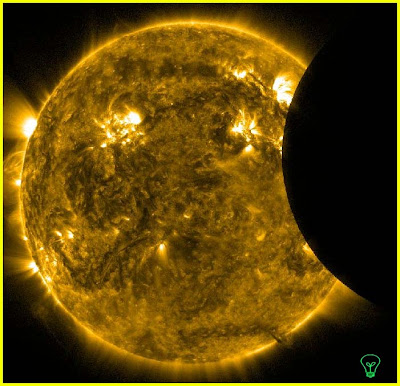The National Aeronautics and Space Administration (NASA), an American space agency, has accorded its relationship to a Saudi academic Dr. Majdah Aburass, making her the first Arab woman to join its research squad of scientists. Dr. Aburas holds a doctorate degree from the University of Surrey in environmental studies and biotechnology, concentrate in oil pollutions.

Aburas, who is currently a faculty member at King Abdulaziz University in Jeddah and researcher in environmental sciences, ecology, sustainable development ─ where she lectures on different disciplines such as microbiological pollution, physiology of microorganisms, industrial microbiology and ecological pollution ─ will join the team at NASA to support and create a series of projects for the development of the Gulf region. She was also appointed as a member of the science division at NASA’s regional office.
Muhammad Ibrahim al-Rashid, president of NASA affiliate the Gulf American Foundation for Space, Technology and Environment, told Arab News that Aburas was appointed as a member of the regional research team over her national initiatives to protect the environment. “It was the result of her continuous work for the environment to solve its problems,” he said.
Aburas told Al Arabiya that she is proud of this appointment and credits her achievements to King Abdullah. She says “King Abdullah’s reign is considered as the golden era for women in Saudi; he is a true leader and a visionary. His latest verdict to allow women to participate in the Shoura Council and the municipal polls was historical and ensures equitable and effective representation of women in decision-making structures,” she added.
As for her new role, she said her appointment came as a result of a collaboration with NASA on a project that she hopes will be implemented in the near future. She said she will be based at NASA headquarters for a month in The United States. where she will have the chance to work closely with other NASA researchers.
Thanks: english.alarabiya.ne
Halloween Costumes

Aburas, who is currently a faculty member at King Abdulaziz University in Jeddah and researcher in environmental sciences, ecology, sustainable development ─ where she lectures on different disciplines such as microbiological pollution, physiology of microorganisms, industrial microbiology and ecological pollution ─ will join the team at NASA to support and create a series of projects for the development of the Gulf region. She was also appointed as a member of the science division at NASA’s regional office.
Muhammad Ibrahim al-Rashid, president of NASA affiliate the Gulf American Foundation for Space, Technology and Environment, told Arab News that Aburas was appointed as a member of the regional research team over her national initiatives to protect the environment. “It was the result of her continuous work for the environment to solve its problems,” he said.
Aburas told Al Arabiya that she is proud of this appointment and credits her achievements to King Abdullah. She says “King Abdullah’s reign is considered as the golden era for women in Saudi; he is a true leader and a visionary. His latest verdict to allow women to participate in the Shoura Council and the municipal polls was historical and ensures equitable and effective representation of women in decision-making structures,” she added.
As for her new role, she said her appointment came as a result of a collaboration with NASA on a project that she hopes will be implemented in the near future. She said she will be based at NASA headquarters for a month in The United States. where she will have the chance to work closely with other NASA researchers.
Thanks: english.alarabiya.ne
Halloween Costumes

